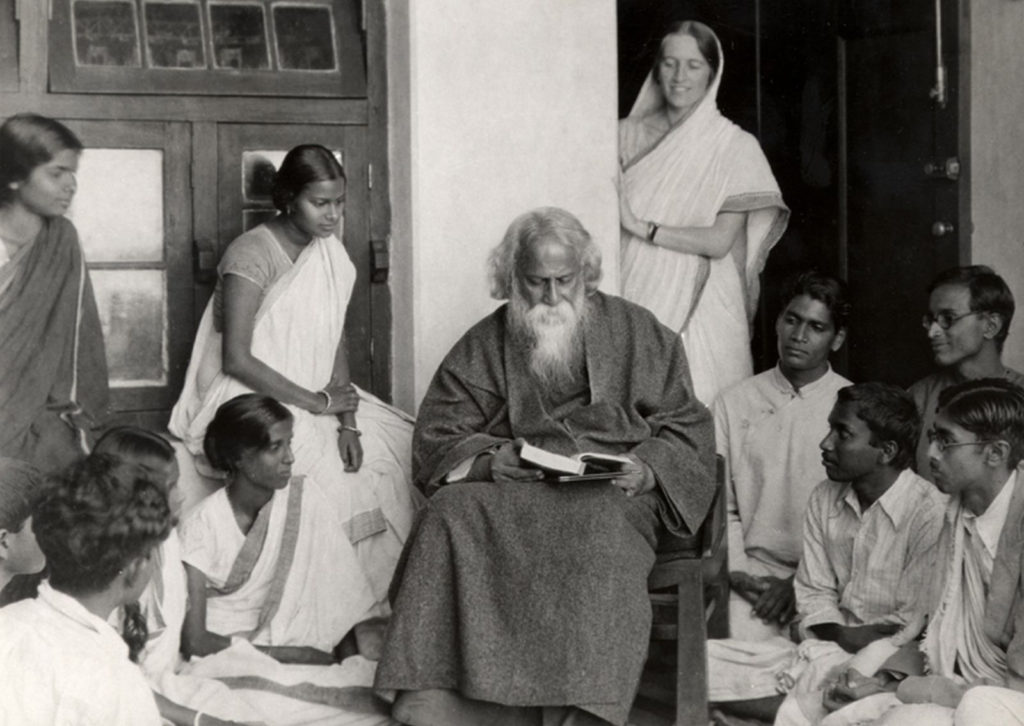Rabindranath Tagore – Facts are many but truth is one: B’day Special

Rabindranath Tagore born on 7th May 1861 was the youngest of thirteen surviving children, in the Jorasanko mansion in Calcutta to Debendranath Tagore (1817–1905) and Sarada Devi (1830-1875). The Tagore family was at the forefront of the Bengal renaissance. They hosted the publication of literary magazines; theatre and recitals of Bengali and Western classical music featured there regularly.
He reshaped Bengali literature and music, as well as Indian art with Contextual Modernism in the late 19th and early 20th centuries. He authored the “profoundly sensitive, fresh and beautiful verse” Gitanjali, he became in 1913 the first non-European to win the Nobel Prize in Literature.
Today, two nations have honoured Rabindranath Tagore by making his poems their national anthems. The world famed national anthem of India namely “Jana Gana Mana Ati Nayaka” is known to all. In addition, the Bangladesh National Anthem worded as “Amar Sona Banlga” was composed by Tagore. There are claims that Rabindranath Tagore was the writer of Sri Lankan national anthem but Lankan national anthem was written by Ananda Samarakoon, also regarded as the father of modern artistic sinhala music. Though interestingly he studied music at Shantiniketan where he first met Rabindranath Tagore.
As a Humanist, universlist, Internationalist, and ardent anti-nationalist, he denounced the British Raj and advocated independence from Britain. As an exponent of the Bengal Renaissance, he advanced a vast canon that comprised paintings, sketches and doodles, hundreds of texts, and some two thousand songs; his legacy also endures in the institution he founded, Vishva-Bharti University.
He had a great talent in painting and played a vital role in modernising the Bengali art. Greatly moved by the Jallianwallabagh massacre and to express his deep reverence for freedom, he gave up his knighthood conferred by the British.
Rabindranath Tagore was a multifaceted man, it would be a mistake to consider Rabindranath, as many, especially in the West, do, as only a poet. Late in his life he took up brush and ink, and his moody and often humorous wash drawings are a unique contribution to modern Indian art. Collections of essays like The Religion of Man and Sadhana (originally a series of lectures at Harvard) are thoughtful and provocative additions to the huge religious and philosophical literature of India.
Although Tagore wrote successfully in all literary genres, he was first of all a poet. Among his fifty and odd volumes of poetry are Manasi (1890) [The Ideal One], Sonar Tari (1894) [The Golden Boat], Gitanjali (1910) [Song Offerings], Gitimalya (1914) [Wreath of Songs], and Balaka (1916) [The Flight of Cranes]. The English renderings of his poetry, which include The Gardener (1913), Fruit-Gathering (1916), and The Fugitive (1921), do not generally correspond to particular volumes in the original Bengali; and in spite of its title, Gitanjali: Song Offerings (1912), the most acclaimed of them, contains poems from other works besides its namesake. Tagore’s major plays are Raja (1910) [The King of the Dark Chamber], Dakghar (1912) [The Post Office], Achalayatan (1912) [The Immovable], Muktadhara (1922) [The Waterfall], and Raktakaravi (1926) [Red Oleanders]. He is the author of several volumes of short stories and a number of novels, among them Gora (1910), Ghare-Baire (1916) [The Home and the World], and Yogayog (1929) [Crosscurrents].
Besides these, he wrote musical dramas, dance dramas, essays of all types, travel diaries, and two autobiographies, one in his middle years and the other shortly before his death in 1941. Tagore also left numerous drawings and paintings, and songs for which he wrote the music himself.
Tagore and Gandhi had a great love and reverence for each other. In fact, it was Tagore who conferred the title ‘Mahatma’ on the father of nation. However, in several issues Tagore greatly differed from Gandhi. Tagore and Einstein met four times between 1930 and 1931. They revered each other moved by their mutual curiosity to grasp other’s contributions, their search for truth and love for music. In describing Einstein, Tagore wrote, “There was nothing stiff about him – there was no intellectual aloofness. He seemed to me a man who valued human relationship and he showed toward me a real interest and understanding.”
